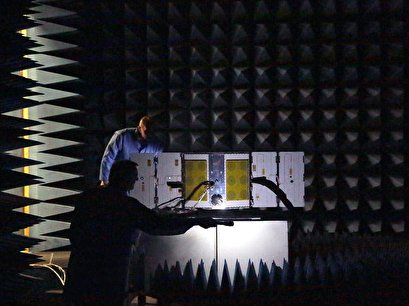TEHRAN, Apr 13 -The Cyclone Global Navigation Satellite System (CYGNSS) probes the inner core of hurricanes to learn about the rapid intensification. Consisting of a constellation of eight microsatellite observatories, the system is placed at Low Earth Orbit (LEO), approximately 510km above the surface at an inclination of 35° from the equator.
 TEHRAN, Young Journalists Club (YJC) -CYGNSS was developed by Nasa as part of its Earth system science pathfinder programme launched in June 2012, in association with the University of Michigan, and the Southwest Research Institute (SwRI).
TEHRAN, Young Journalists Club (YJC) -CYGNSS was developed by Nasa as part of its Earth system science pathfinder programme launched in June 2012, in association with the University of Michigan, and the Southwest Research Institute (SwRI).
It was launched from Cape Canaveral Air Force Station in Florida, US, on-board Pegasus XL rocket in December 2016.
Design and development of CYGNSS
CYGNSS comprises eight micro satellites, each weighing roughly 29kg (64lbs) and equipped with four GPS receivers. Each satellite has external dimensions of 51cm x 64cm x 28cm. The structure of the spacecraft integrates microsatellite and instrument electronic boards.
CYGNSS carries a Delay Doppler Mapping Instrument (DDMI), including a Delay Mapping Receiver (DMR) with two nadir-pointing antennae and one zenith-pointing antenna. It is designed for a lifespan of approximately two years.
The detailed design of the satellite was completed by January 2015. The assembling of eight microsatellites began in August 2015 and was completed in February 2016. The functional and environmental testing of the satellites was completed in August 2016 and the system was transported to Vandenberg Air Force Base for integration with the Orbital ATK Pegasus XL launch vehicle in August 2016.
The University of Michigan was selected to provide CYGNSS mission design and implementation, including the design of the constellation and production of retrieved surface wind speed estimates. The design for CYGNSS was completed at Science Operations Centre located at the University of Michigan.
Southwest Research Institute (SwRI) was selected to construct and test each of the eight CYGNSS microsatellite observatories at its Mission Operations Center. SwRI is also responsible to offer risk management, systems engineering and mission assurance for CYGNSS.
Surrey Satellite Technology was contracted to design, manufacture and test the Delay Doppler Mapping Instrument (DDMI), a science payload integrated on each CYGNSS microsatellite observatory. The company also provided GPS receivers and other antennae for the CYGNSS satellites.
The deployment module for CYGNSS was provided by Sierra Nevada Corporation.
Source:aerospace-technology
 TEHRAN,
TEHRAN,